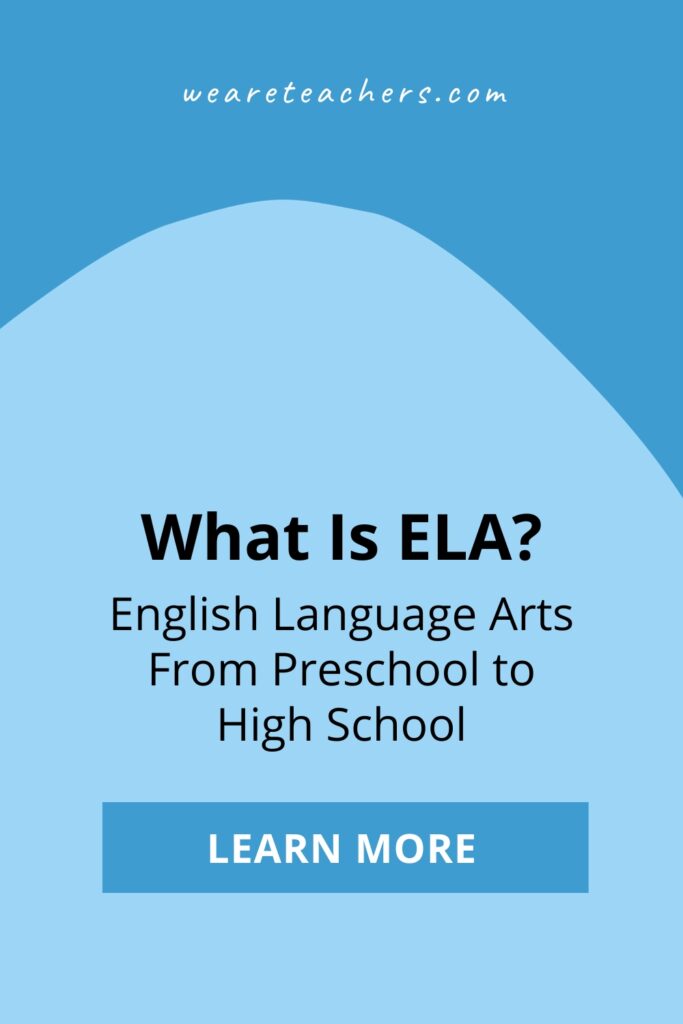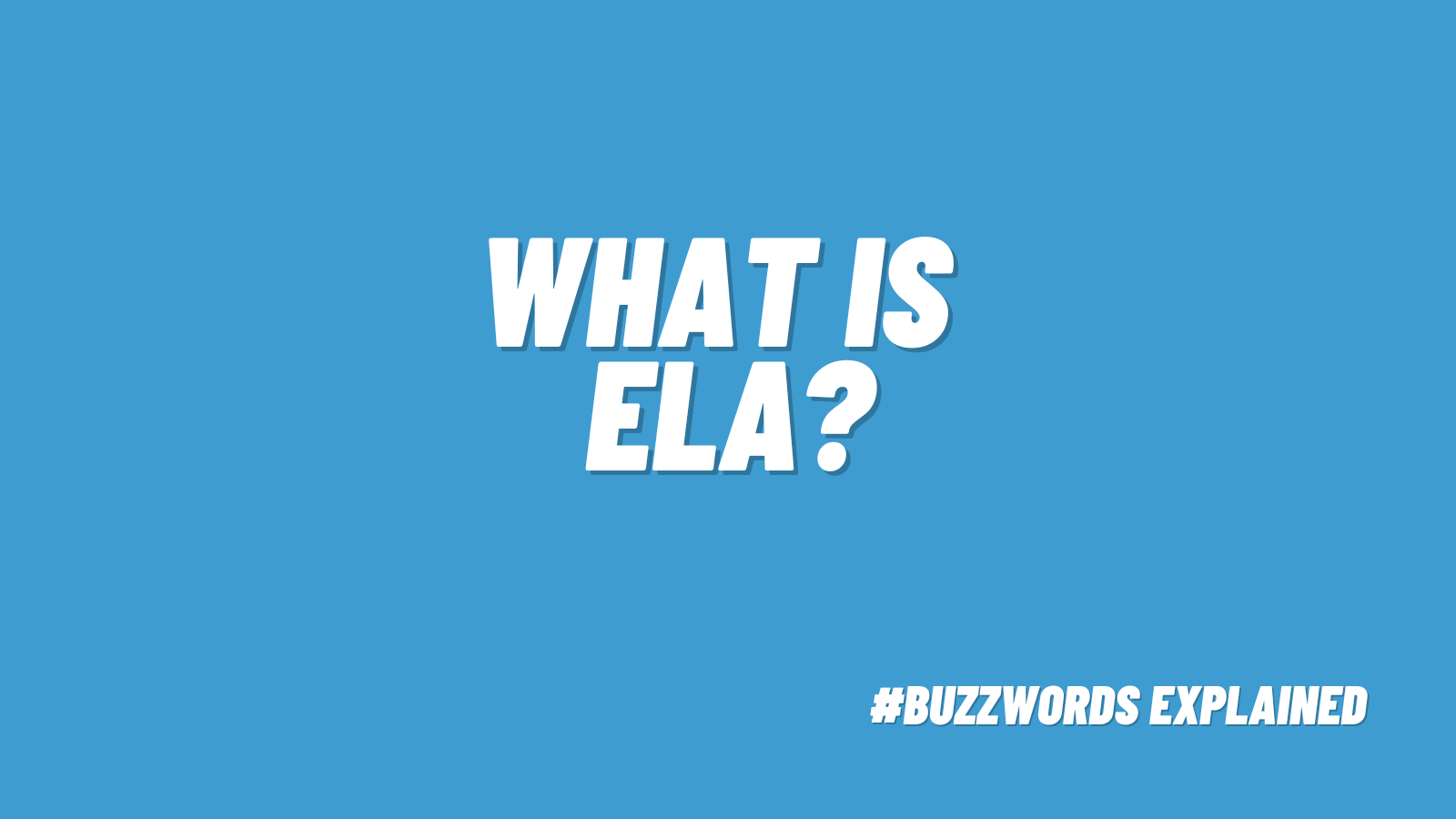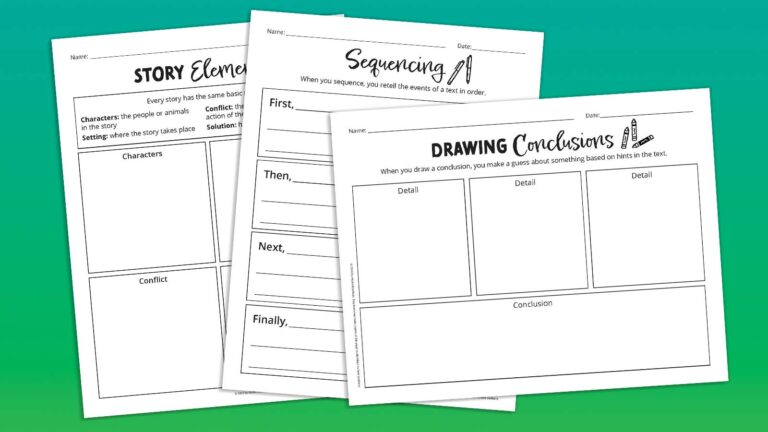From the day they start school until the time they earn their high school diploma, a student’s schedule nearly always includes ELA. But what is ELA, and what subjects does it cover? Here’s an overview of this vital area of study.
What is ELA?
ELA stands for English language arts. Essentially, it’s a catch-all term used in education to cover all the subjects and topics related to the written and spoken language. (The word “arts” here means “a skill acquired through practice” as opposed to referring to visual or performing arts.) It’s all about learning to communicate effectively using the English language.
Many people are used to hearing this area of study or class simply called “English.” But that term can also refer to the study of English as a foreign or second language. To avoid confusion, educators use the term English language arts as a broad category that covers subjects like reading, writing, spelling, literature, and public speaking.
The National Council of Teachers of English (NCTE) breaks ELA into five broad categories: reading, writing, speaking, listening, viewing, and visually representing. Each of those categories can be broken down into more specific subjects, such as reading comprehension, creative writing, or debate.
What subjects are included in ELA?
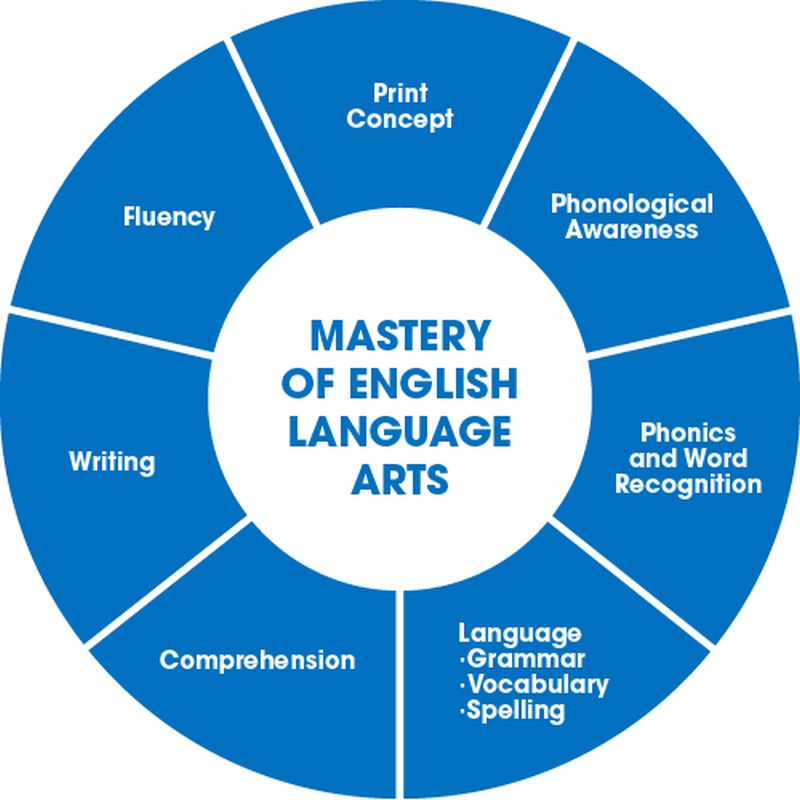
Depending on their age, a student studies a variety of topics in English Language Arts, including:
Reading
This wide heading covers everything from first learning to read to the study of complex works of literature. It includes learning the alphabet and the sounds letters make, then putting those letters together to form words and words to form sentences.
As students learn to read, they also master reading comprehension. They explore the meaning of texts, author’s purpose, themes, symbolism, and more. They compare and contrast different works, and read various works of literature across the genres.
Writing
This category covers both handwriting (and typing) and general writing skills. When students learn to handwrite or type, this gives them the ability to communicate using the written word. Then they focus on different forms of writing, such as essays, stories, poems, research papers, and more forms of written communication.
Spelling
English is an especially complex language when it comes to spelling. Many other languages contributed to English, meaning it’s often hard to establish conventions and patterns. Students learn lists of spelling words to help them master the most commonly used English terms.
Vocabulary
This subject takes spelling one step further by exploring the meaning of words. A rich vocabulary aids in reading comprehension, helping the reader fully understand the text. Throughout their school years, students build vocabulary through dedicated activities that help expand their own personal word bank.
Grammar
Grammar is the proper use of a language, and it includes topics like syntax (the order of words in a sentence), punctuation, parts of speech, tenses, mechanics, and more. These skills are key in written and spoken communication, ensuring a person is able to communicate easily and is understood correctly.
Literature
Reading comprehension grows into the study of literature, where students explore classic and contemporary works of fiction, nonfiction, poetry, drama, and more. Schools often have required reading lists of works deemed important for students to learn at certain ages.
Research/Library Skills
When they’re younger, kids learn to use the library to find and check out books they want to read. They also learn how to look up words in the dictionary or thesaurus and use reference works (both paper and digital) for research. Older students learn about primary sources, reliability, and separating fact from opinion during research.
Speech/Debate
Through public speaking and debate, students polish their oral communication skills. They learn to speak clearly, expressing their ideas in ways others can understand and relate to. When they debate, they gain the skills to disagree with others in a constructive manner and defend their own opinions with facts and persuasion.
Why is ELA important?
Perhaps NCTE member Dana Maloney puts it best: “We teach the most essential human skills: how to receive information from others and how to transmit information. This is literacy. Through reading and listening, we receive information; through writing and speaking, we transmit information.”
Learning to communicate is one of the most basic of human accomplishments. When we can’t clearly express our own ideas to others, we leave ourselves open to misinterpretation and misunderstanding. If we can’t read well, we miss out on much valuable information. Being able to think, speak, read, and write clearly is absolutely vital in our society.
More than that, language arts encourage creativity and freedom of expression. Maloney also notes: “Literature is life. When we read imaginative literature—whether prose, poetry or drama—we explore what it means to be alive and to be human. … We help students crisscross the globe, step into other people’s shoes to see the world through their eyes, and more. Through all of this, we also help students deepen understandings of themselves and of their lives.”
What does ELA class look like?
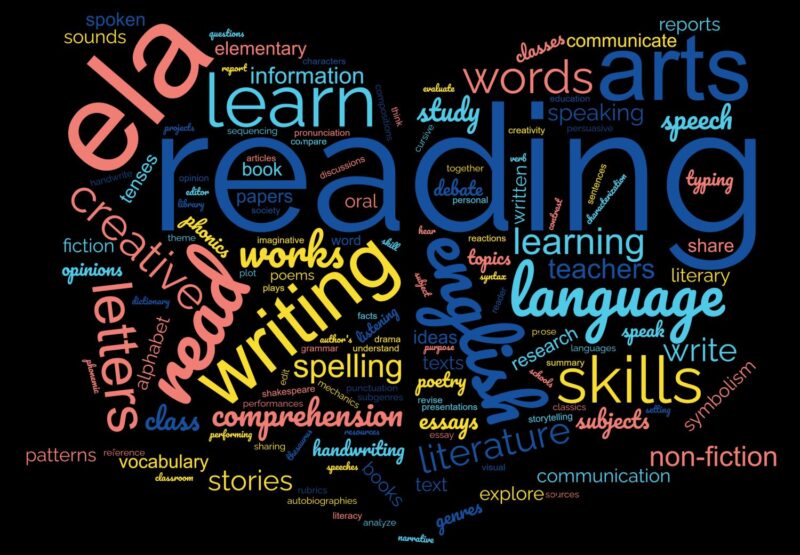
English language arts classes vary widely across grade levels. Here’s a summary look at what students focus on at different ages.
Preschool and Kindergarten ELA
This is the age when kids learn the basic skills of reading and writing. They master the alphabet and develop phonemic awareness (matching letters with the sounds they make). They build letters into words, using phonics to help with pronunciation. Students listen to many books read aloud to work on reading comprehension skills like sequencing and characters.
Pre-K and kindergarten students also start learning handwriting, tracing letters until they can write them on their own. They may also start learning to use a computer keyboard. Teachers encourage storytelling skills, asking kids to share stories and writing down what they say. Students also often illustrate stories they tell or hear.
Elementary School ELA
Throughout the elementary years, kids deepen their ability to read. They study sight words, which are words that don’t fit conventional spelling patterns, and memorize spelling and vocabulary lists. Elementary students learn punctuation and syntax (the proper order of words), the parts of speech, and verb tenses.
As students polish their reading skills, they focus more on reading comprehension. They identify author’s purpose, plot, setting, and main ideas. They read nonfiction texts and answer questions about what they’ve read, to ensure they’re reading thoroughly. Students also read longer texts as a class or on their own, sharing their reactions to what they’ve read in a variety of ways.
Elementary students perfect their handwriting and typing skills, and may learn cursive handwriting as well. They use those skills to begin writing short essays and creative works like short stories and poems. Kids at this age begin practicing public speaking by giving oral book reports or presentations, and work on actively listening to others.
Middle School ELA
By middle school, students are generally expected to be able to read and write English clearly and efficiently. Their focus now shifts to using those basic skills in more complex ways. They read more advanced works of fiction and nonfiction and are usually expected to do their reading as homework outside the classroom. These students learn to form opinions on what they’ve read, evaluating the text to explore theme, characterization, and more. They may participate in class discussions, write reports, or participate in other projects to demonstrate their learning.
Middle school students begin learning more forms of writing, such as persuasive and argumentative essays, academic research papers, narrative writing, and others. They may work in peer groups and use rubrics to evaluate their own and others’ writing. Creative writing might include autobiographies, short stories, and various forms of poetry.
At this age, students give more oral presentations and may be expected to write and deliver speeches to their peers. They might also participate in performances of plays to learn about the elements of drama.
High School ELA
In high school, ELA has a heavy focus on literature. Students learn “the classics,” and many states have required reading lists by grade. For instance, students often learn one Shakespeare play each year: Romeo & Juliet for freshmen, Julius Caesar for sophomores, and so on. They also read a wide array of literature types from ancient to contemporary, discussing their reactions orally or in writing. They use literary devices like symbolism to analyze texts for deeper meaning.
At this age, students do a great deal of writing across the curriculum. In their ELA class, they write many different types of essays and learn to revise and edit their compositions more thoroughly. Teachers often strive to make writing assignments meaningful by giving them real-life applications, such as college essays or letters to the editor. Students may also be asked to write creative works like stories and poems in a specific style.
High school students are often required to take a speech or debate class at some point. These classes help polish their oral communication skills, which they’ll need as they move on to careers in the adult world.
English Language Arts Resources for Teachers
Here at We Are Teachers, we have a huge array of free English language arts resources for every grade level. Visit our English Language Arts page to get started, or check out these popular articles:
- What Is Phonics?
- Reading Levels Explained: A Guide for Parents and Teachers
- What Is the Science of Reading?
- Free Printable Reading Comprehension Strategies Bundle
- Literary Genres and Subgenres Every Student Should Know
- Types of Poetry To Share With Kids (Plus Examples of Each)
- Creative Book Report Ideas for Students
- Fascinating Essay Topics for High School
- Best Books for All Ages on a Variety of Topics, as Recommend by Teachers
How do you answer the question “What is ELA?” Come share your thoughts in the We Are Teachers HELPLINE group on Facebook.
Plus, Your Language Arts Block Is the Best Time to Teach SEL: 10 Ideas to Try.
